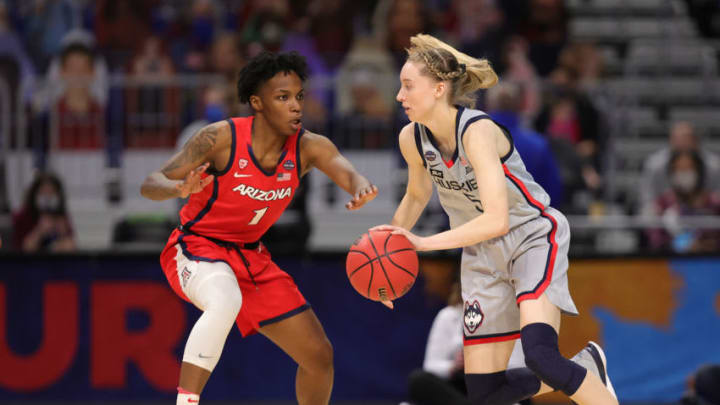
The “Chicken or the Egg” Problem
One could argue that even with the recent growth, women’s basketball ratings simply aren’t high enough to justify a larger television platform. But if the sport never gets ample opportunities to capture a wider audience, how is it supposed to prove it can do so? Thus, there is a bit of a “chicken or the egg” situation.
Even so, the sport has managed to capitalize on some of its limited opportunities. Ratings for the 2019 women’s Final Four were strong enough to convince ESPN to nationally broadcast all 63 tournament games. After COVID-19 delayed this a year, it happened for the first time this past tournament. Based on the ratings growth, this definitely seemed to be the correct business decision for ESPN.
Even beyond women’s college basketball, there’s evidence to suggest that if women’s sports are made accessible, they will attract large audiences. WNBA ratings have also been on an upward trend, but it goes beyond basketball as well.
"“I think that one of the main factors that will help women’s sport going forward is getting it showcased on FTA (free-to air) broadcast channels”, said Hannah Goodridge, a Strategy Consultant for Nielsen Sports and Entertainment UK. “In sport, sport fans like sport in general, if it is in front of them and easy to access i.e via FTA channels then people will watch it. And we have seen this with lots of major women’s sporting events i.e. Women’s Rugby World Cup, Women’s Football World Cup, the Euros etc have all attracted large audiences because they have been easily accessible to fans. Media outlets and broadcasters providing a platform to women’s sport has and will continue to be a major driver in the growth of it.”"
Even if increased broadcast opportunities corresponded with solid ratings, some might argue any additional growth would be limited for the following reason: men just aren’t interested in women’s sports.
Well, the data suggests otherwise. Per the same 2018 Nielsen report, 84% of sports fans have an interest in women’s sports, and of this group, 51% were male. This suggests both that both women and men are interested in women’s sports. Most sports fans — including men — have at least a baseline interest. This interest just needs to be cultivated.
While broadcast opportunities are crucial, media coverage is an obstacle as well. In the midst of March Madness (March 15th-21st), 14 major sports media companies directed only 1-2% of their social media posts towards the women’s game. Given how much engagement the women’s tournament generated, this might have been a missed opportunity for these organizations.
The men’s NCAA Tournament has a TV contract valued at $19.6 billion over 22 years (~$0.9 billion annually). The women’s tournament, on the other hand, is packaged with 24 other men’s and women’s college sports championships (College World Series, softball, hockey, etc.) in a deal that’s worth only $500 million over 14 years ($35 million per). It’s the women’s March Madness, however, that reportedly is the “prize” of the deal.
By the time this deal gets renegotiated, women’s basketball will likely deserve a standalone contract. As long as the sport is given the proper opportunity, there’s every reason to believe its momentum won’t stop anytime soon.
